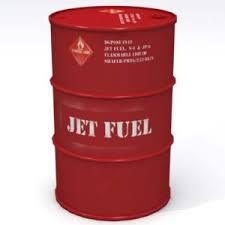
Jet fuel or aviation turbine fuel is just like kerosene on steroids and there're several proprietary jet fuel formulas with most of them containing chemicals that intend to burn fuel of the jet engines cleaner and more efficiently. It also helps prolonging engine life in fact; kerosene and aviation fuel are nearly identical in every way except for only a few additives in modern-day jet a1 fuel in Dubai.
ClassificationJet fuel is a classification of aviation fuel used in aircraft that are powered by gas-turbine engines. It's either colourless or straw-shaded in appearance and the most common use of aviation fuel is in commercial aviation for the Jet A and Jet A-1. Yet another type is used commonly in civilian turbine-engine powered aviation labelled as Jet B which is known best for enhanced cold-weather performance.
Jet fuel is a combination of many different hydrocarbons. The range of size which is determined by the number of carbons in the product and weight is actually associated to the requirements of the product like smoke point or freezing. Kerosene-type jet a1 fuel in Dubai that also includes Jet A and Jet A-1 have carbon number distribution between 8 and 16 per the number of carbon atoms per molecule; Naphtha-type or wide-cut jet fuel including Jet B which is between 5 and 15.
ChemistryKerosene is frequently used synonymously with jet fuel however, the entire chemistry and chemical bonding between the both seriously overlaps as that of basic kerosene which is achieved by adding certain chemical ingredients such as Cyclohexane, Benzene, Toluene and 1, 2, 4-Trimethylbenzene.
Producers of jet a1fuel in Dubai use many different formulas and ingredients for the refinement and production such as diethylene glycol monomethyl ether, naphthalene and ethyl benzene. All these additives and ingredients minimise gumming or sticking of the fuel, static charges, corrosion and icing. Most of the aviation fuels are labelled under the umbrella of hazardous products.
KeroseneKerosene is simply a distilled product obtained from petroleum which forms the basis of aviation fuel. There're many different applications of kerosene even with some particular jet engines and it's known by a variety of names around the globe including "paraffin oil" and "stove oil". Kerosene is primarily used for heating of the homes and buildings whereas fuel for vehicles and equipment. It's also a source of energy during emergency power outages. Kerosene is also a hazardous product!
Kerosene & Jet fuel: A few considerationsIt's highly recommended not to replace jet fuel against kerosene in any appliances, equipment or even transport that mightn't be designed operating chemical additives found in jet fuel products. This is because many of the components are toxic that increases the risk of fire or dangerous combustion.
ConclusionFollowing all the details listed above, kerosene can be used in jet engines. That being said, kerosene is a primary ingredient in jet fuel so it definitely works but not as nicely as the nicely blended products. Do read the safety instructions of the equipment or appliances before using any such to prevent damage!

